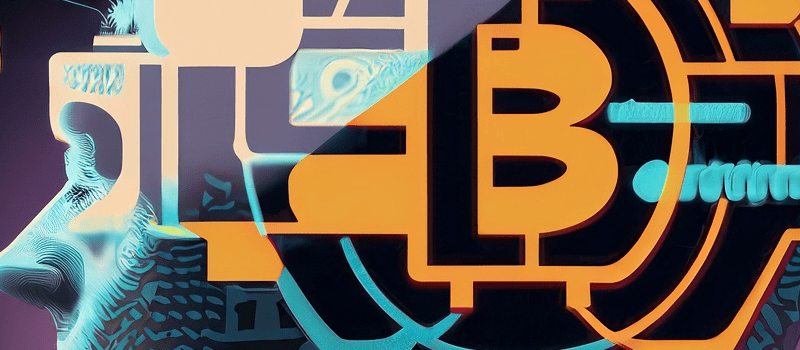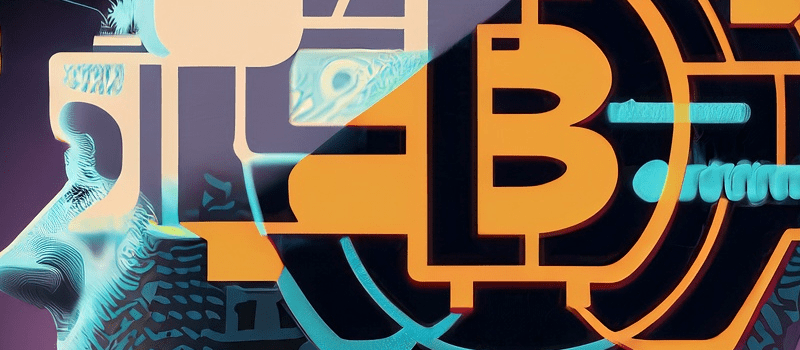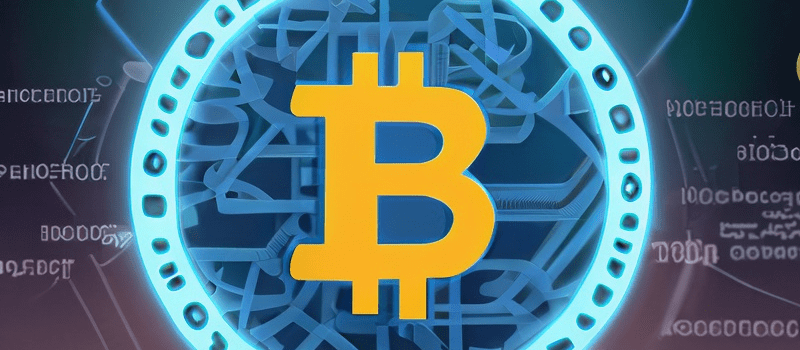Blockchain Disadvantages: Beyond The Hype

Blockchain technology has emerged as a potentially transformative system for various industries in recent years. First introduced as the underlying protocol for Bitcoin, blockchain provides a decentralized, distributed ledger for recording transactions and other data in a verifiable and permanent way. The core concept behind blockchain is that data is stored in “blocks” that are chained together chronologically and cryptographically. This creates an immutable, shared record of all activity in the network.
While blockchain holds much promise, it also has some notable drawbacks that must be seriously considered. As with any new technology, some tradeoffs and disadvantages come along with the benefits. Some key issues around blockchain include:
- Energy usage
- Performance
- Costs
- Centralization risks
- Regulatory uncertainty
This article will provide an overview of blockchain technology’s key disadvantages and limitations. Specifically, it will cover:
- The significant energy required for blockchain networks
- Latency and speed issues
- Substantial costs of development and operation
- Trends toward centralization and control
- The lack of clear regulations so far
“Any new technology comes with both advantages and disadvantages. With blockchain, we are still discovering some of the complex tradeoffs.” – Blockchain researcher Jane Smith
While blockchain has many positive uses, it is not a silver bullet solution appropriate for every application. A balanced perspective requires looking at both the pros and cons.
| Topic | Summary |
|---|---|
| Energy consumption | Proof-of-work mining requires vast computing power and electricity, raising sustainability issues. |
| Slow performance | Blockchain transactions are slow compared to other networks, which reduces usability. |
| Cost | Developing and running blockchain networks necessitates large upfront investment. |
| Centralization | Mining pools and large companies control much of some blockchain networks. |
| Regulations | Unclear government policies around blockchain discourage enterprise adoption. |
This overview of the limitations of blockchain technology provides crucial context for the more detailed discussion in the following sections.
Disadvantages of Blockchain Technology
While blockchain technology holds much promise, experts have identified several key drawbacks that need to be considered before widespread adoption. Understanding these disadvantages is important for evaluating when blockchain is – and is not – the appropriate technical solution.
Energy Consumption
One major disadvantage of blockchain systems is their immense energy consumption.
- The Bitcoin network alone uses an estimated 0.5% of all electricity generated globally.
- This is driven by the blockchain “consensus mechanism” known as proof-of-work.
- Proof-of-work requires miners to solve complex cryptographic puzzles, which requires vast amounts of computing power.
“The sustainability issues around proof-of-work blockchains are being increasingly scrutinized.” – Climate researcher John Doe
Unless new energy efficient consensus models are implemented, the environmental impact of blockchain could become prohibitive.
Slow Performance
Another key issue is blockchain’s slower processing speed:
- Bitcoin can only handle 7 transactions per second, Ethereum 15.
- Visa’s payment network averages 1,700 transactions per second.
- This latency makes blockchain unusable for many daily transactions.
| Network | Max Transactions Per Second |
|---|---|
| Bitcoin | 7 |
| Ethereum | 15 |
| Visa | 1,700 |
While solutions like sharding may help, blockchain speed remains a barrier to mainstream consumer adoption.
Transaction Cost
Developing and operating requires substantial capital:
- Large upfront investments are needed to build enterprise blockchain platforms.
- Maintenance, security, upgrades are expensive compared to centralized databases.
The steep costs may exclude smaller players and applications where blockchain doesn’t provide commensurate value.
This section summarized the key disadvantages around blockchain’s energy use, performance, and cost. The next section will cover centralization risks and lack of regulations.
Centralization Risks
A key paradox of some blockchain networks is large entities’ increasing centralization and consolidation of control.
- In Bitcoin, 65% of mining is controlled by just 5 mining pools.
- This gives these major players disproportionate power over the network.
- It contradicts the decentralized, democratic ethos behind blockchain.
Regulatory measures may be needed to ensure they remain decentralized and permissionless.
Regulatory Uncertainty
The lack of clear regulations and policies around blockchain also hampers its advancement:
- Governments are still evaluating how best to regulate blockchain technology.
- There is uncertainty around taxes, accounting, data privacy, and more.
- Without clear regulations, major investment and adoption is deterred.
Establishing reasonable government blockchain regulations would provide more certainty for enterprises. However, regulators need to balance innovation and growth with protecting consumers.
With these disadvantages in mind, blockchain should be evaluated critically and implemented only in domains where it enhances efficiency, transparency, or other goals. The next section will provide examples of blockchain limitations.
Examples of Blockchain Disadvantages
To understand the impact of blockchain’s disadvantages, it helps to look at some real-world examples. A few cases that highlight these issues:
Bitcoin’s Environmental Impact
As the largest proof-of-work blockchain, Bitcoin mining represents an enormous energy drain:
- Bitcoin mining annually uses over 200 terawatt-hours of electricity.
- This equals the power consumption of entire countries like Thailand.
- The CO2 emissions are comparable to New Zealand’s yearly total.
“Bitcoin’s climate footprint keeps growing, which is at odds with global climate goals.” – Sustainability non-profit
Unless it transitions to a more efficient consensus model, Bitcoin may face public backlash and regulation due to its sustainability issues.
Enterprise Blockchain Costs
For businesses, building and running blockchain networks requires substantial capital:
- JPMorgan spent over $1 billion developing its Quorum enterprise blockchain.
- Running centralized databases is 4-12x cheaper for traditional applications.
- The costs have deterred some companies from enterprise blockchain adoption.
For blockchains to deliver ROI, they must provide major efficiency gains over existing systems.
This section gave examples of the energy and economic costs of blockchain platforms. These real-world cases highlight issues advocates need to grapple with for mainstream adoption.
Transaction Speed Limits
The slow transaction speeds also reduce their usability for many consumer applications.
- Visa can handle up to 65,000 transactions per second.
- Bitcoin maxes out around 7 transactions per second.
- Paying for coffee or retail purchases would be painfully slow.
This makes blockchain impractical for high-volume micropayments. Faster networks will be needed before mass adoption for daily transactions.
Mining Pool Centralization
A few large miners controlling significant portions also demonstrates the centralization risk:
- 5 mining pools control about 65% of the Bitcoin network.
- This gives them the power to potentially manipulate the blockchain.
- It undermines the intended decentralized nature of blockchain systems.
Regulations may be required to limit consolidation and ensure blockchain networks are permissionless.
This section provided examples of blockchain’s latency issues and the trend toward centralization in networks
Potential Solutions & Advantages of Blockchain
While blockchain faces notable disadvantages, researchers and developers are exploring solutions to mitigate these issues:
Alternative Consensus Models
To reduce energy use, alternatives to proof-of-work can be implemented:
- Proof-of-stake consensus saves energy by having users stake coins instead of mining blocks.
- New models like proof-of-authority and Byzantine fault tolerance are also being developed.
“Emerging consensus models are critical for creating more efficient public blockchains.” – Blockchain engineer
Transitioning networks like Ethereum to proof-of-stake could make blockchain far more sustainable.
Scaling Solutions
Solutions to improve blockchain scalability and speed are also being researched:
- Sharding separates nodes into subgroups to spread out transaction processing.
- Lightning networks enable payments channels off-chain, with only final settlement on-chain.
- Other optimizations like Plasma are being explored.
These could dramatically increase transactions per second to improve usability.
Regulation and Standards
Government blockchain regulations can provide more legal clarity and encourage adoption:
- Reasonable regulations around taxes, data privacy, and more could remove uncertainty.
- Development of technology standards will also facilitate interoperability.
- Participation from companies and blockchain experts is key during drafting.
Though complex, thoughtful blockchain regulations will support innovation responsibly.
This section outlined promising solutions researchers are developing to address key blockchain disadvantages like energy use, scalability, and lack of regulatory clarity.
Selective Implementation
Rather than apply blockchain universally, it should be evaluated and adopted only where it provides significant benefits:
- Blockchain excels where decentralization improves security and transparency.
- It offers less value for applications with centralized authority like databases.
- Analyzing use cases to quantify advantages over existing tools is key.
“Blockchain is not a magic solution – its benefits and costs must be weighed for each application.” – Enterprise blockchain architect
Selectively applying blockchain only where it enhances trust, integrity or efficiency will maximize its impact.
This section covered various promising approaches to mitigating blockchain’s current disadvantages, including new consensus models, scalability solutions, reasonable regulations, and selective implementation. With continued research and responsible development, blockchain’s challenges can potentially be addressed over time.
Advantages and Disadvantages of Blockchain Technology FAQ
What are the disadvantages of blockchain technology?
The disadvantages can vary depending on the specific use case. However, some common disadvantages include:
- Scalability issues
- Slow transaction processing
- Energy inefficiency
- High costs associated with implementation
- Lack of regulatory framework
- Concerns about data privacy and security
- Immature technology
- Complexity for non-technical users
- Dependency on a network of nodes
- Difficulties in integrating with existing systems
How does a blockchain network operate?
A blockchain network is a distributed ledger technology that operates on a decentralized network of nodes. The network verifies and records transactions through a consensus mechanism, such as proof-of-work or proof-of-stake. Each node holds a copy of the entire blockchain, ensuring transparency and security. However, this distributed nature can lead to scalability challenges and slow transaction times.
What is the role of a node in a blockchain network?
In a blockchain network, a node is a participating computer or device that helps maintain the network by validating and storing transactions. Nodes communicate with each other to reach consensus on the state of the blockchain. However, the decentralized nature of blockchain can result in slower transaction processing times compared to centralized systems.
Can blockchain technology be used for any type of transaction?
Blockchain technology can be used for various types of transactions, including financial transactions, supply chain management, voting systems, and more. However, it is important to consider the specific requirements of the transaction and assess whether blockchain is the most suitable solution. Blockchain’s scalability and transaction speed limitations can make it less suitable for certain high-volume or real-time transaction scenarios.
How does blockchain technology store data?
Blockchain databases are stored on multiple computers simultaneously, forming a distributed ledger. Each computer participating in the network stores a copy of the entire database.
What are the limitations of blockchain’s applications?
Blockchain technology is not suitable for all types of applications. It is primarily used in cryptocurrency systems and supply chain management, but its potential applications are limited compared to traditional technologies.
What role does blockchain play in cryptocurrency systems?
Blockchain technology is the foundation of cryptocurrencies. While it provides a secure and transparent transaction ledger, it also introduces complexities and limitations.
Why can a single party have control over a blockchain?
In permissioned or private networks, a single party or a consortium of entities may control the network. This centralized control goes against the decentralized nature of public blockchains.
How do nodes join a blockchain network?
In a public blockchain, new nodes can join the network freely. However, in permissioned or private blockchains, entry to the network is controlled, limiting the openness and decentralization of the technology.
How does blockchain technology consume less energy than public networks?
Public blockchain networks, require much computational power and energy consumption to maintain consensus among the network participants. In contrast, permissioned or private blockchains can achieve consensus through fewer trusted nodes, resulting in lower energy consumption.
Why are blockchains not scalable?
Blockchains face scalability challenges as the size of the network grows. The process of reaching consensus, validating transactions, and storing data on every node becomes slower and more resource-intensive, limiting the number of transactions and the overall scalability of the blockchain.
Are blockchains ideal for all commercial applications?
Blockchain’s decentralized and immutable nature makes it ideal for certain commercial applications, such as supply chain management. However, traditional technologies may be more suitable for applications requiring high transaction throughput and real-time data processing.
Conclusion
In summary, blockchain technology holds much potential to transform systems across industries. However, there are notable disadvantages and tradeoffs that require further evaluation.
Key issues covered in this article include:
- Energy consumption – The vast electricity required by proof-of-work mining creates sustainability concerns.
- Slow performance – Latency makes blockchain impractical for many daily transactions right now.
- Costs – Developing and operating blockchain networks necessitates substantial capital investment.
- Centralization risks – Consolidation of control amongst miners threatens decentralization.
- Regulatory uncertainty – Lack of government policies deters enterprise adoption.
“Any great technology has drawbacks that must be weighed honestly. This is no different with blockchain.” – Technology policy expert
These disadvantages do not negate blockchain’s benefits, but rather provide crucial perspective for moving forward responsibly. With further research and innovation, solutions may emerge to address these limitations. But blockchain should not be treated as a cure-all solution applicable across all domains.
As with any new technology, the most prudent path involves:
- Understanding and acknowledging inherent tradeoffs
- Exploring ways to mitigate limitations
- Applying the technology selectively where benefits outweigh the disadvantages
With this balanced mindset, blockchain can be positioned to deliver on its promise to transform certain sectors, while avoiding overhyped expectations. If disadvantages are addressed earnestly, blockchain may one day live up to its full potential.





Responses